Of all the things an early-stage founder has to figure out, one of the most unexpected is how to get the most from your board. But effectively leveraging your board for guidance and support is essential. The slides you use can help you run efficient, effective board meetings that get the most out of the discussions they elicit.
A lot has been written about optimal board meeting cadence, process and hygiene, but for the sake of completeness, at the earlier stages, often shorter (~1.5 hrs), more frequent meetings (~6 weeks) make sense.
Each board will have their preference and ultimately the cadence needs to work for everyone. You’ll want to send your materials 24-48 hours in advance to give participants time to review the material and formulate their questions. It’s also essential to include your “Head of…” functional leaders to discuss their areas of expertise.
Then dive into the material! As a CEO, your goal is to communicate the progress of the business clearly and elicit constructive feedback. So the information in your deck is more important than the visual design as you put together your board deck, although both matter.
The slides in this article aren’t meant to be a complete board deck. They are examples of real, early-stage board slides from seed and Series A stage companies that did a great job informing their boards and driving constructive discussions. [Disclosure: Costanoa Ventures has invested in Highnote and Highline.]
Showing business progress: Where the rubber meets the road
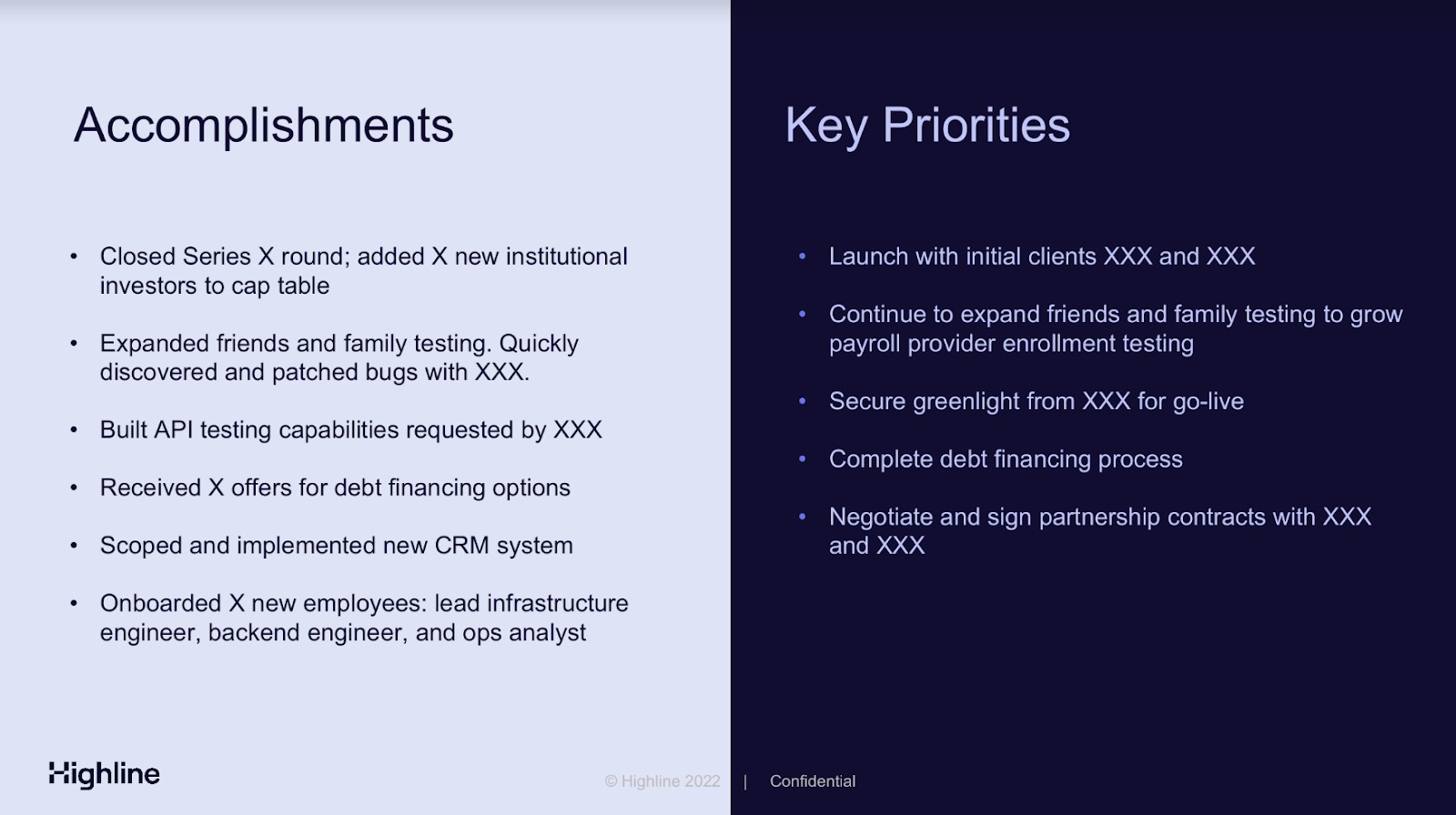
Image Credits: Costanoa Ventures
This is a strong open: It briefly recaps major accomplishments and sets the stage for the company’s key priorities until the next board update. It also effectively frames the CEO’s key discussion points with the board. While ideally your board will have read slides in advance, they often won’t.
This slide helps everyone level-set up front, creating a framework for helpful discussion. Remember, that’s what a board meeting is all about: discussion, not a presentation or a read-out.
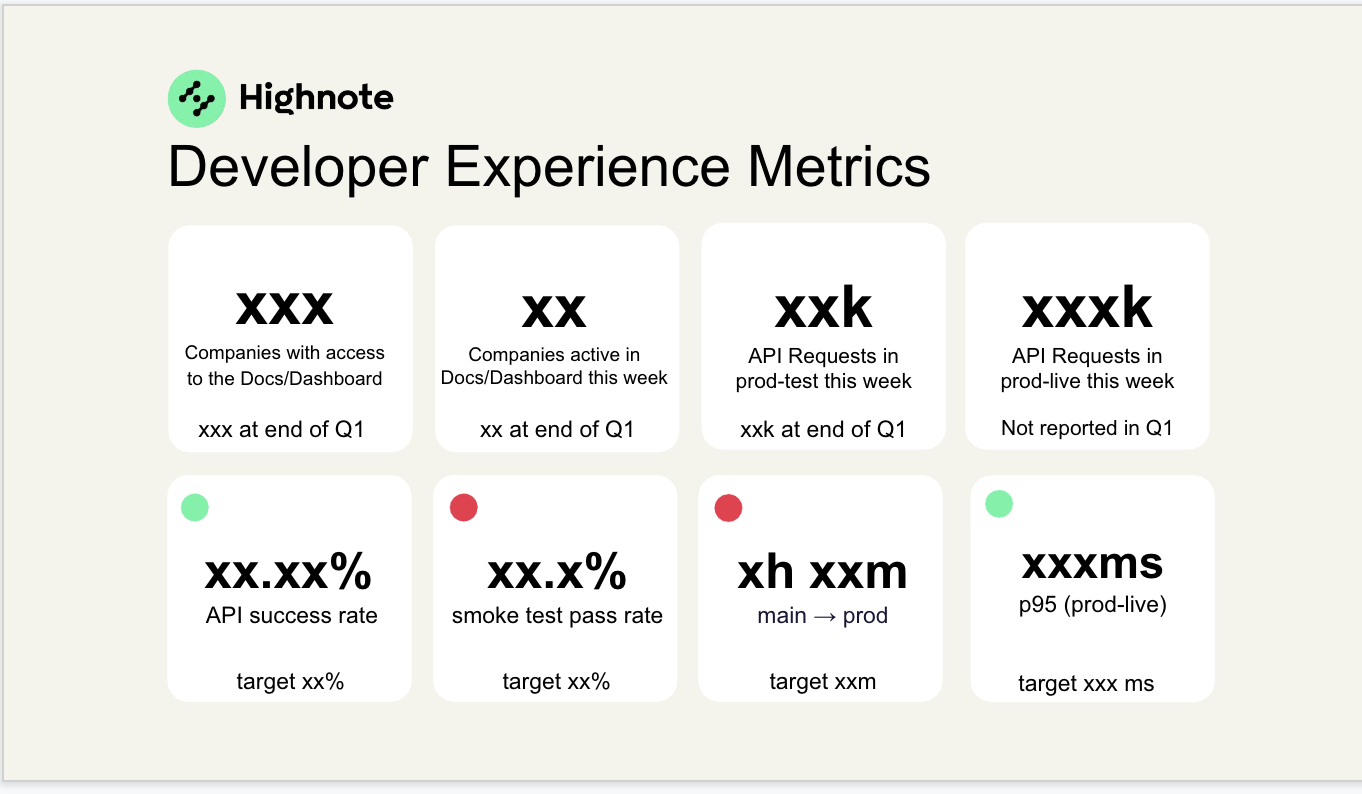
Image Credits: Costanoa Ventures
Here’s another great slide: The “business metrics overview” is a snapshot of the key metrics by which the board should measure the company. Each company will have its own key metrics, but it’s good to open with a summary that sets the context for how progress should be measured.
Your board members typically work with many companies, and don’t always know the best ways to measure your company’s progress. So this is where you frame how best to understand your specific key metrics.
For early-stage companies, revenue is usually a lagging indicator (so not your most important metric). By setting out what are your key metrics, and flagging them with red or green dots, for instance, your board can quickly see what is/isn’t on track, which they always need to know. Unlike you, they don’t live and die by your plan, so you’ll need to remind them here.
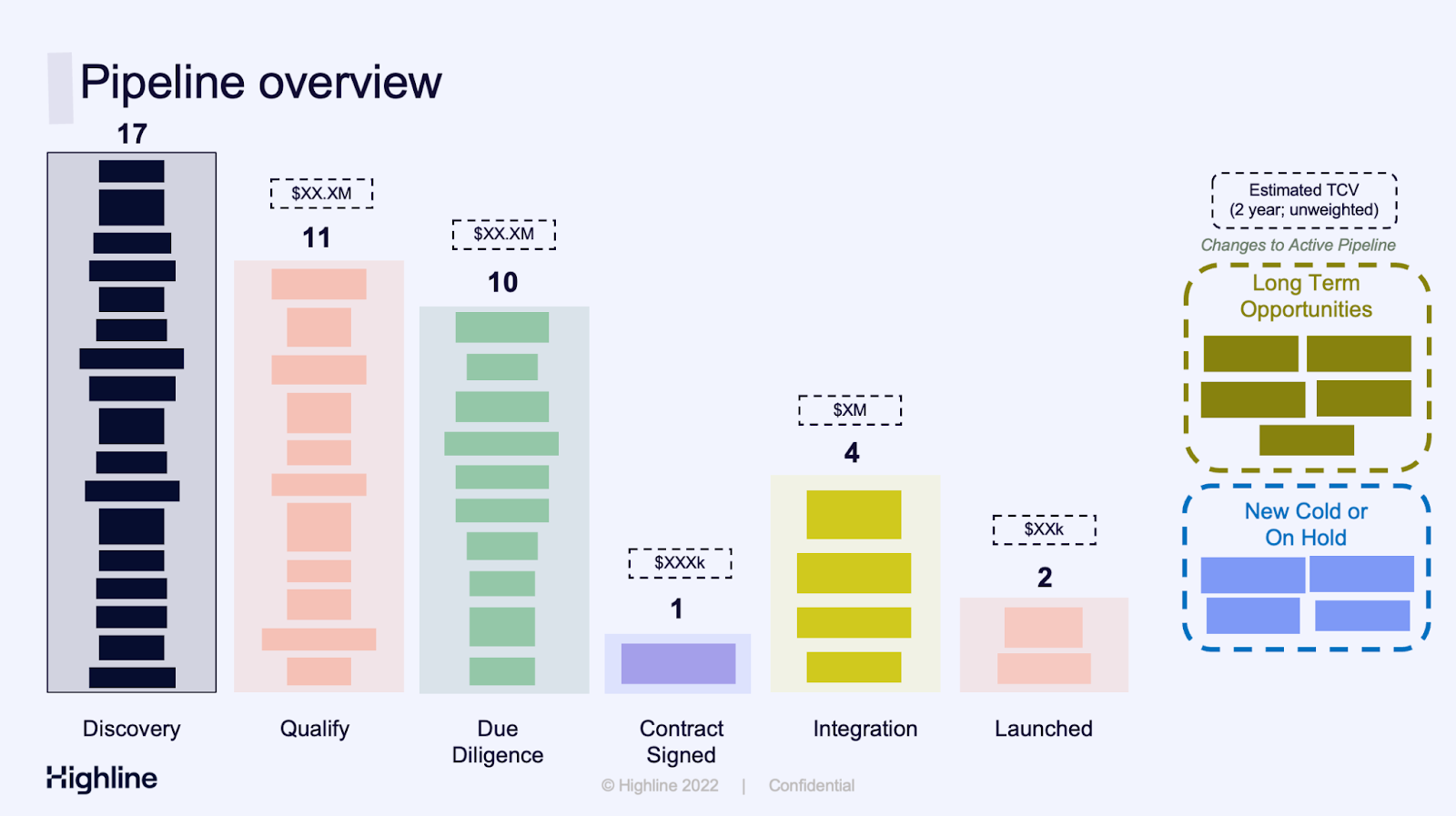
Image Credits: Costanoa Ventures
If you’re already selling product, a pipeline slide shows board members the general health of your market and your go-to-market motion. This slide quickly shows the relative size of each stage of your pipeline, highlighting operational gaps and places where your board can be helpful. (Note: boxes = customer logos in this example).
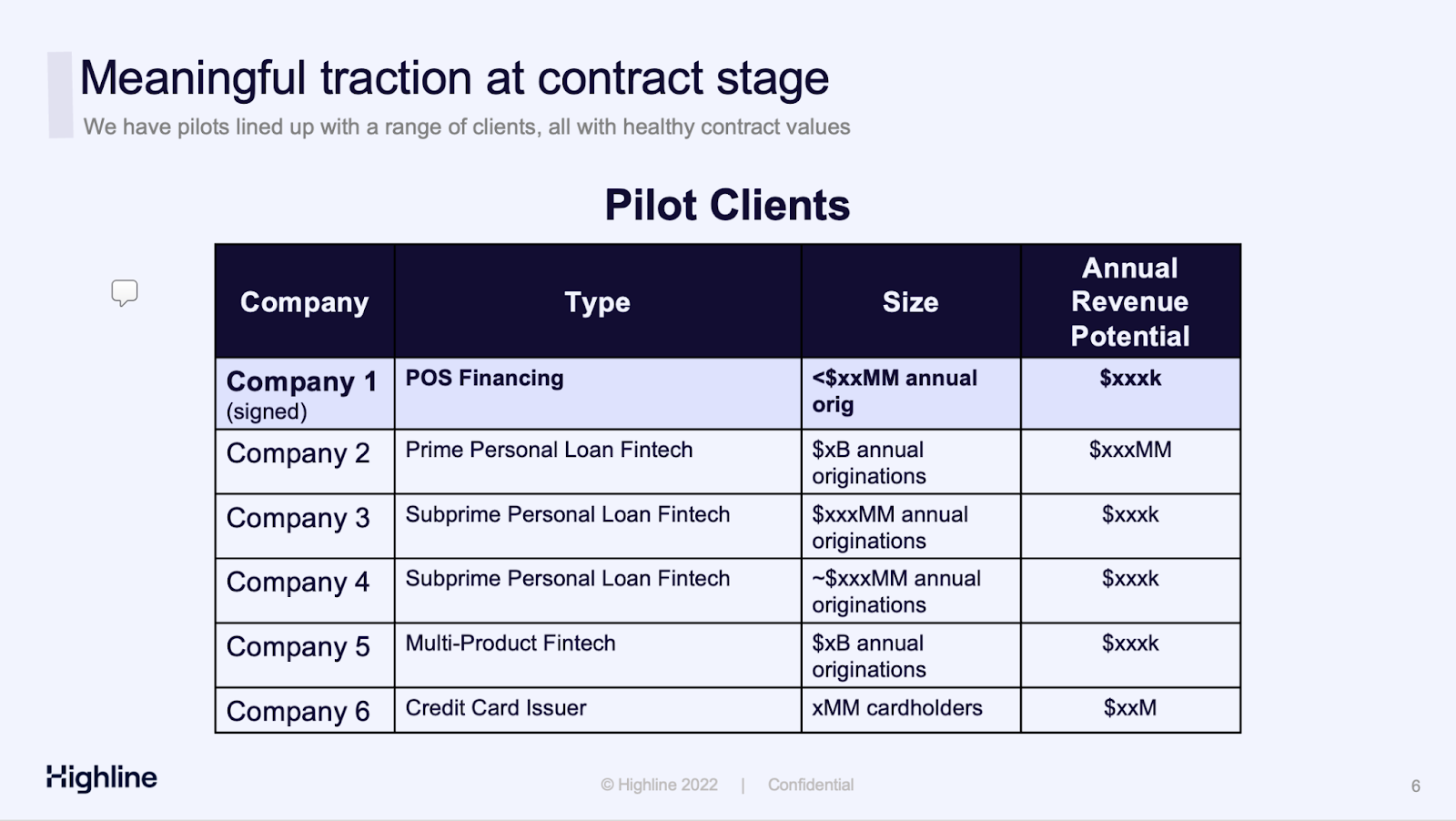
Image Credits: Costanoa Ventures
Your pipeline overview isn’t enough, though. The next step is to double-click into some level of detail that shows conversion into revenue, so your board can see that your revenue growth and prospects are indeed healthy enough to build a sustainable business.
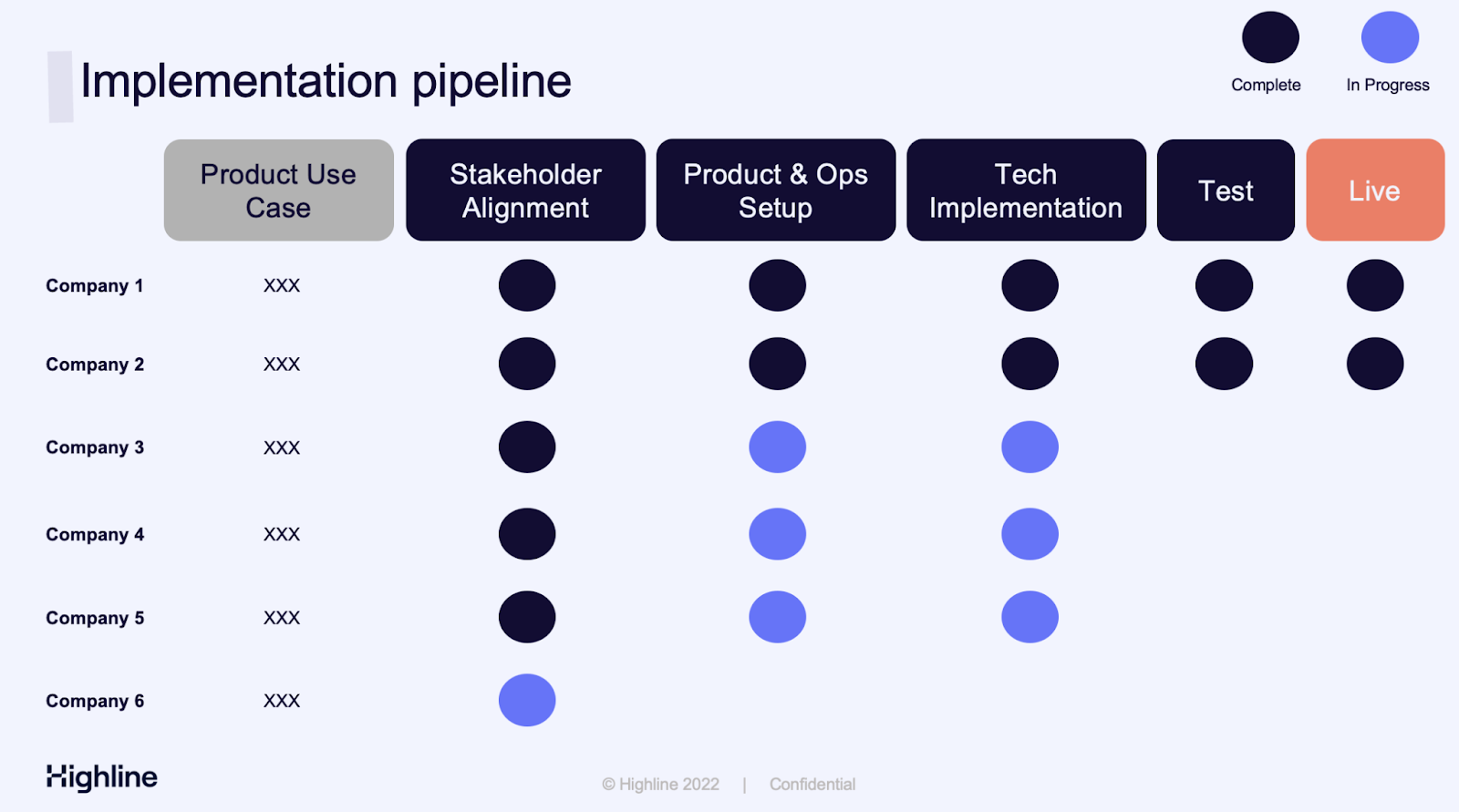
Image Credits: Costanoa Ventures
I love this slide. Its simple design really starts to reveal operational effectiveness. Remember that, ideally, your board members are reading this before the meeting without the benefit of your talk track. Simply and without a lot of detail to process, this slide quickly conveys the status of the key elements that make your product use cases go live and which customers are close to being fully implemented.
If you’re pre-revenue, this shows your progress against the things that will make you money. Keep the slide simple and provide deeper commentary in the board meeting itself.
Showing product progress
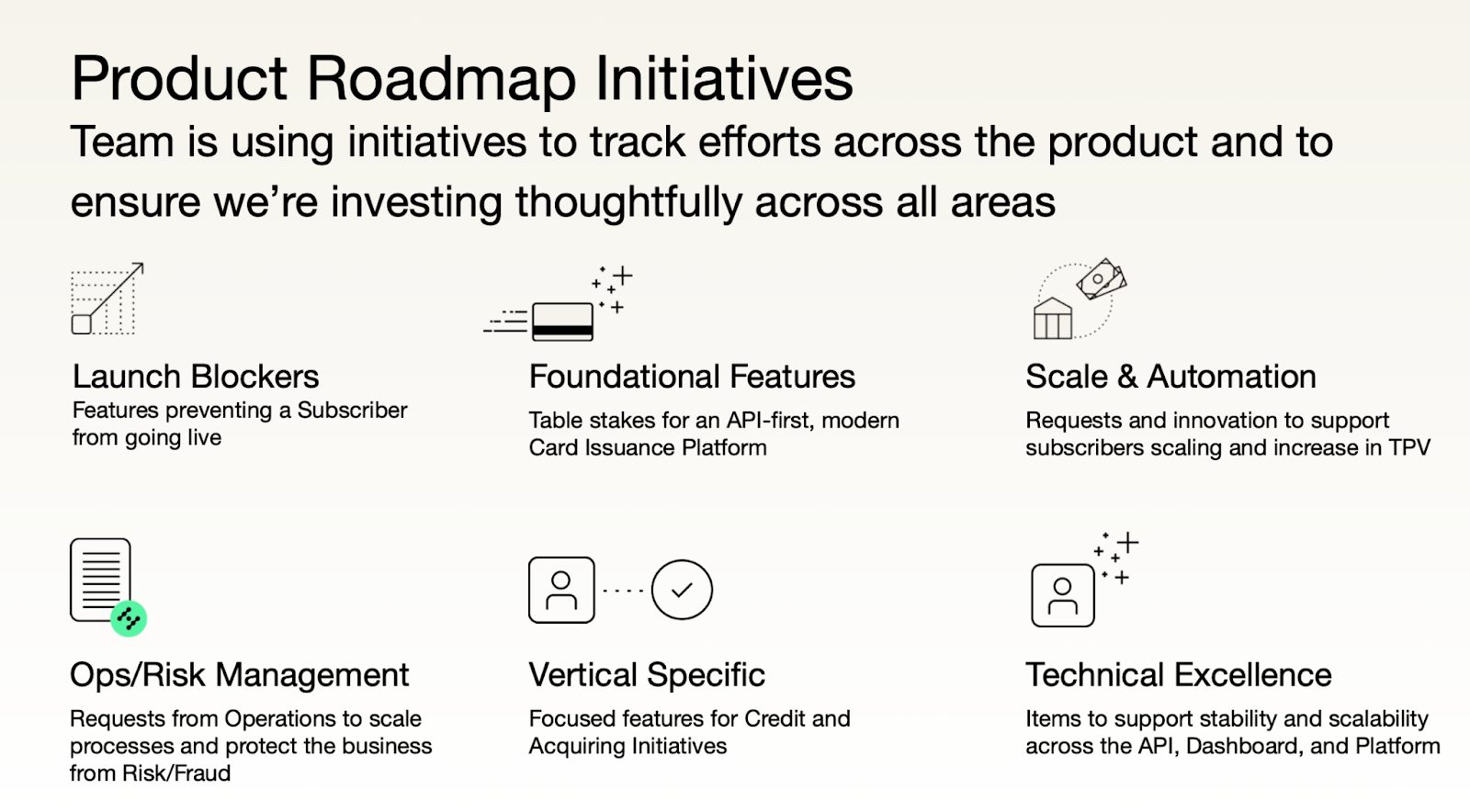
Image Credits: Costanoa Ventures
This slide makes it extremely clear what the company is focused on building and connects it with the desired business outcome. You’re not reporting on minute feature status; you’re showing the board all-important overall product progress. This also sets the stage for the board to discuss whether the product team is focused on the right things to propel the business forward.
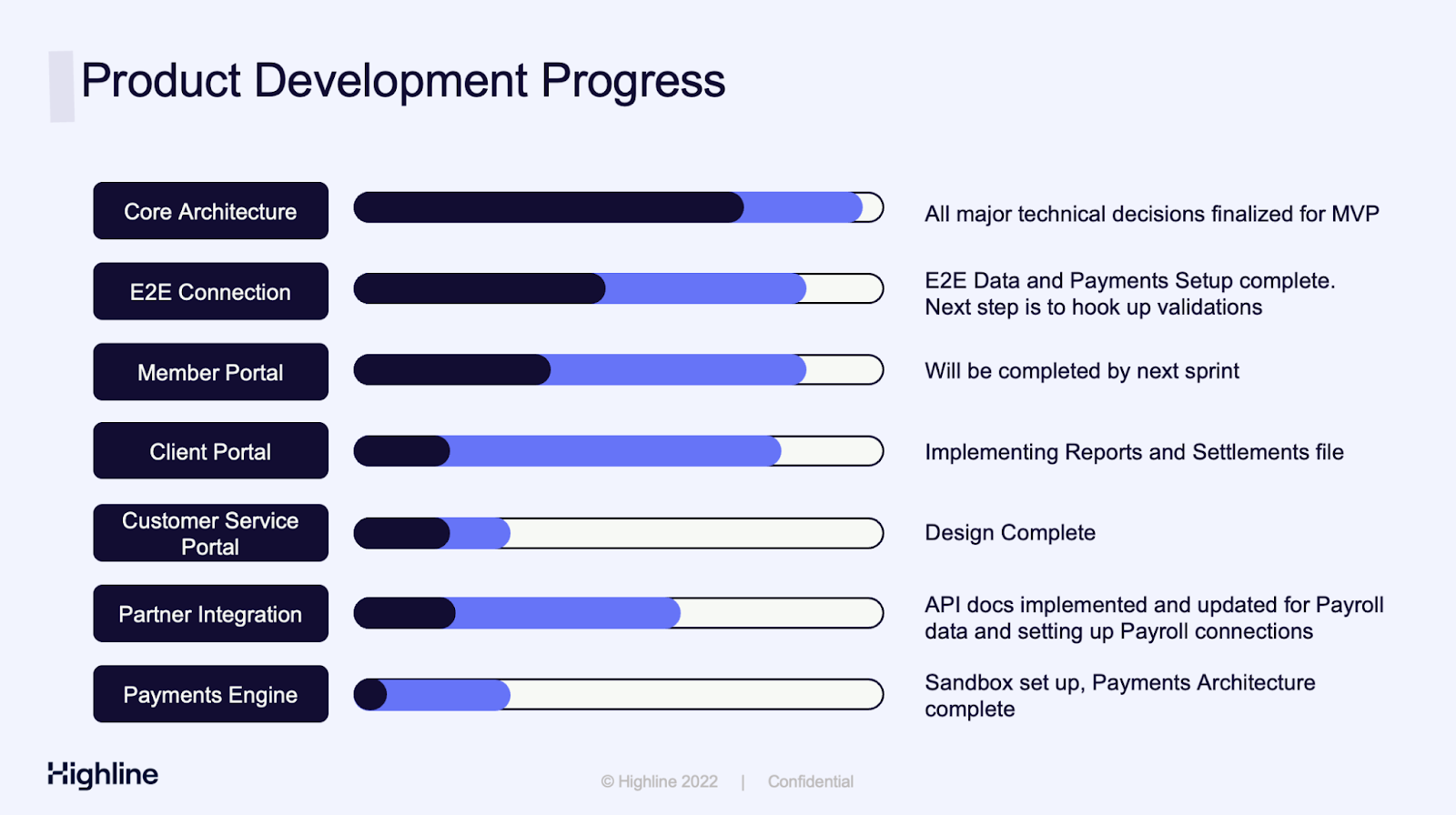
Image Credits: Costanoa Ventures
Once you’ve set the product roadmap with the prior slide, it’s time to show a more typical “progress against feature areas/previously discussed goals,” including a specific timeline that’s not shown here. The best product teams understand how to translate business objectives into core areas of work.
Note that many board members won’t be able to connect the dots on how progress in these core areas correlates to business outcomes. Your Head of Product’s talk track should fill in any gaps.
Showing company-building progress and financials
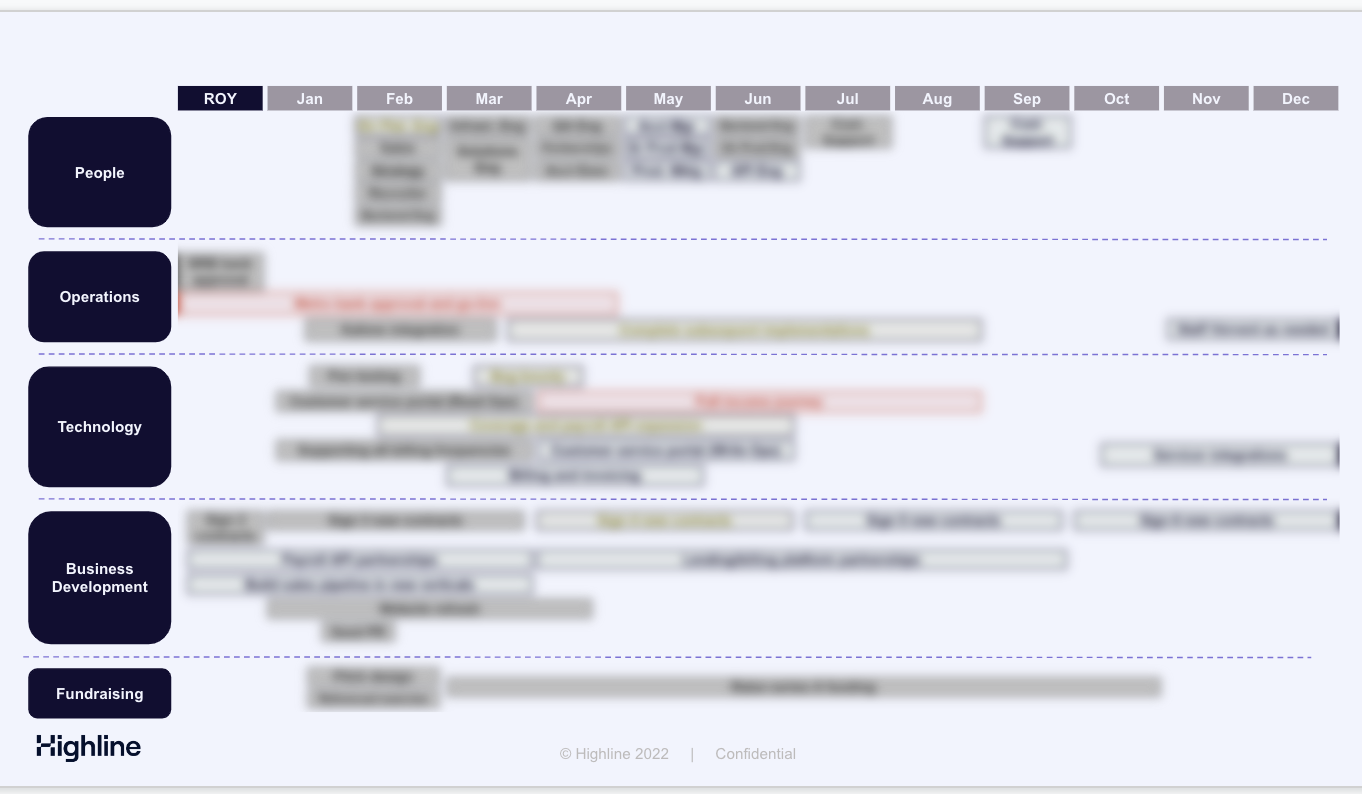
Image Credits: Costanoa Ventures
While simplified in this case, this company-building status and health slide really helps show your company’s progress versus plan across the entire business, not just sales. As with your metrics slide earlier, using color — green, yellow, red — to indicate where things are and aren’t progressing helps your board quickly understand and help you address any parts of the business that aren’t going well.
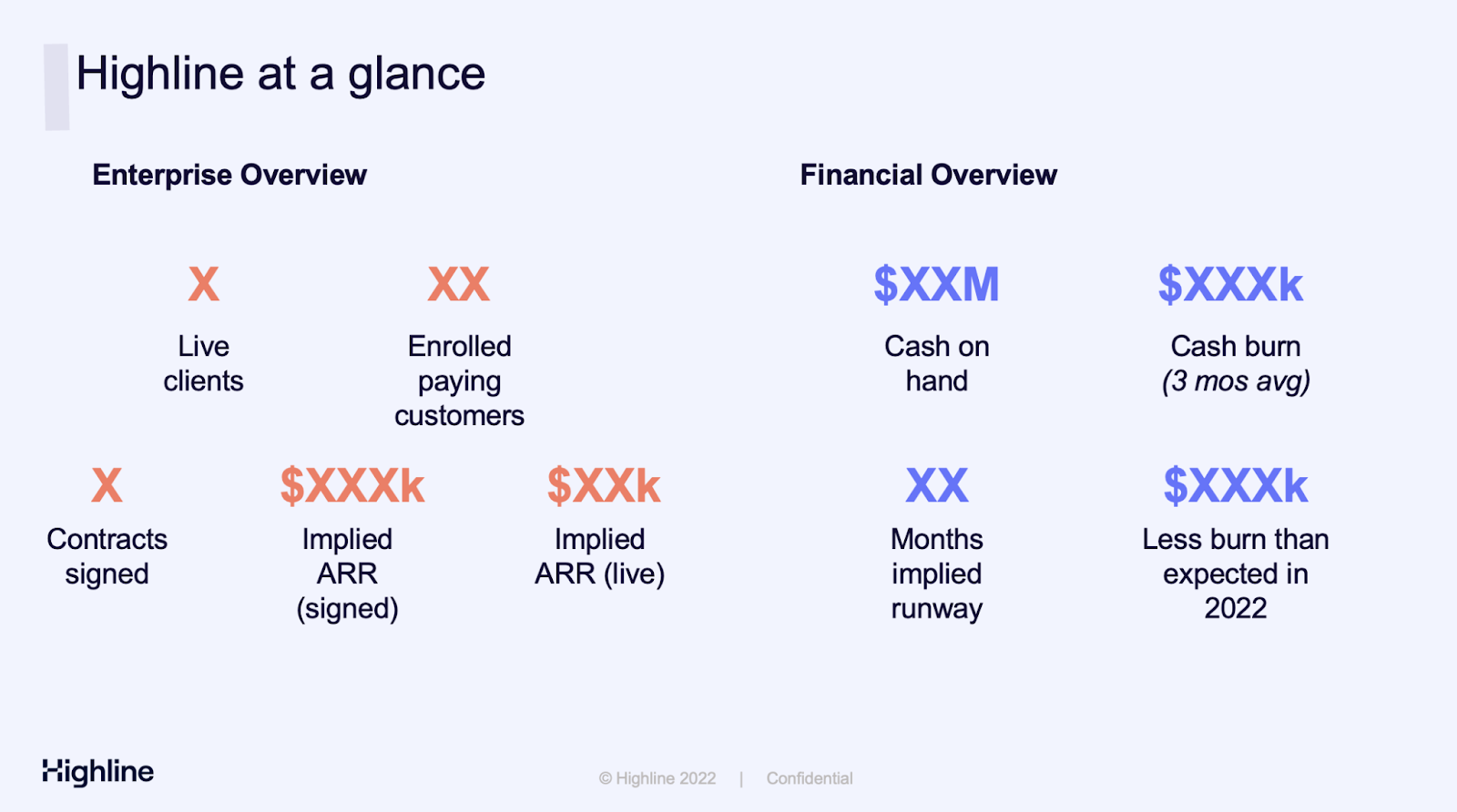
Image Credits: Costaoa Ventures
Every company — even the most mature — needs this type of simple financial overview. It’s the business’ financial health at a glance. Your board cares about your progress and how much runway you have left in which to make your goals. They want to see these numbers together every time.
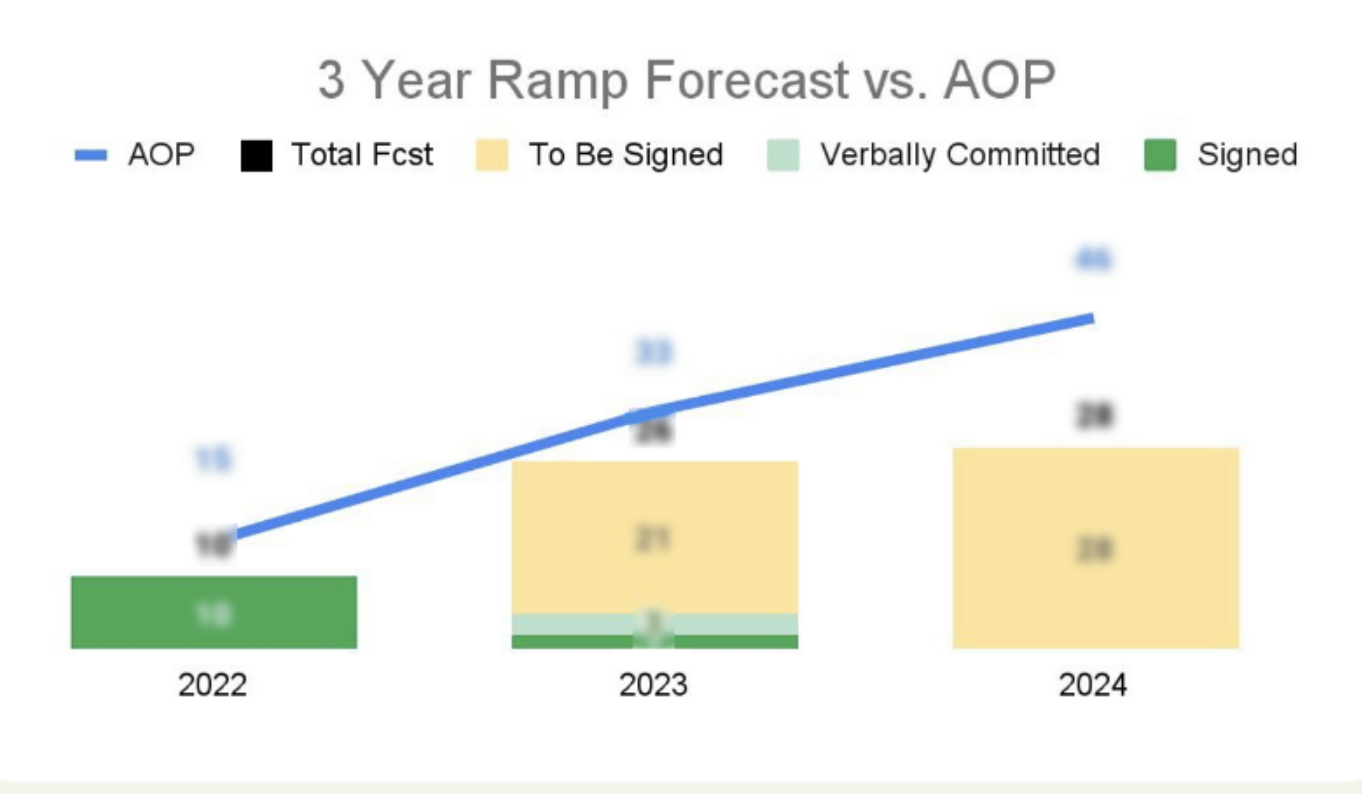
Three-year ramp forecast vs. the annual operating plan. Image Credits: Costanoa Ventures
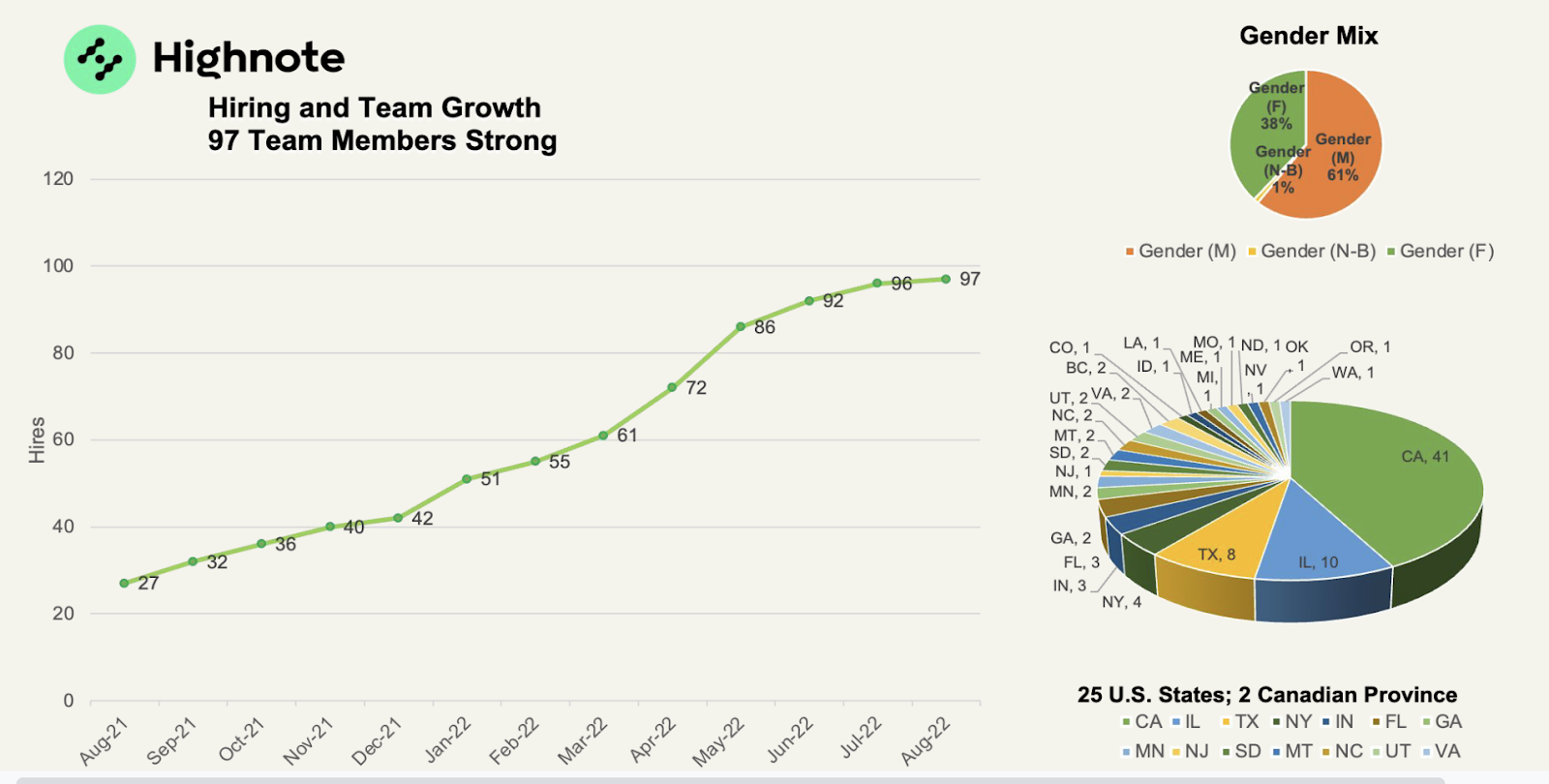
Image Credits: Costanoa Ventures
Company building at the early stages is about the people who make things happen. In the spirit of measuring what matters, Highnote is showing not just whether their hiring is on target but also whether they’re living up to their ideals, in this case maintaining the gender and geographic diversity that’s so important to them.
Running good board meetings is hard!
Running efficient board meetings can be challenging for first-time and veteran founders alike and founders often underestimate how important good slides are to deriving value from board meetings. Hopefully, these examples will make creating an effective board presentation less daunting. A few final tips:
- Certain key slides and discussion points are important to any board, and I’ve tried to outline them here, but solicit feedback from your board members.
- Information design matters. Don’t make your board work hard to see what you mean — make it clear what the key points are and voice over the rest.
- What makes a board deck “good” will evolve as your company does; this should be a constantly evolving process to ensure you’re communicating information effectively.
- Remember that you’re in this together! Talk to your board about what they want to see and what will create the most effective and helpful dialog in the meetings. They’ve seen more companies and board decks than you have (or likely will) so use their expertise to build a board deck and meeting structure that will help you maximize the value of your meetings.
Good luck!
